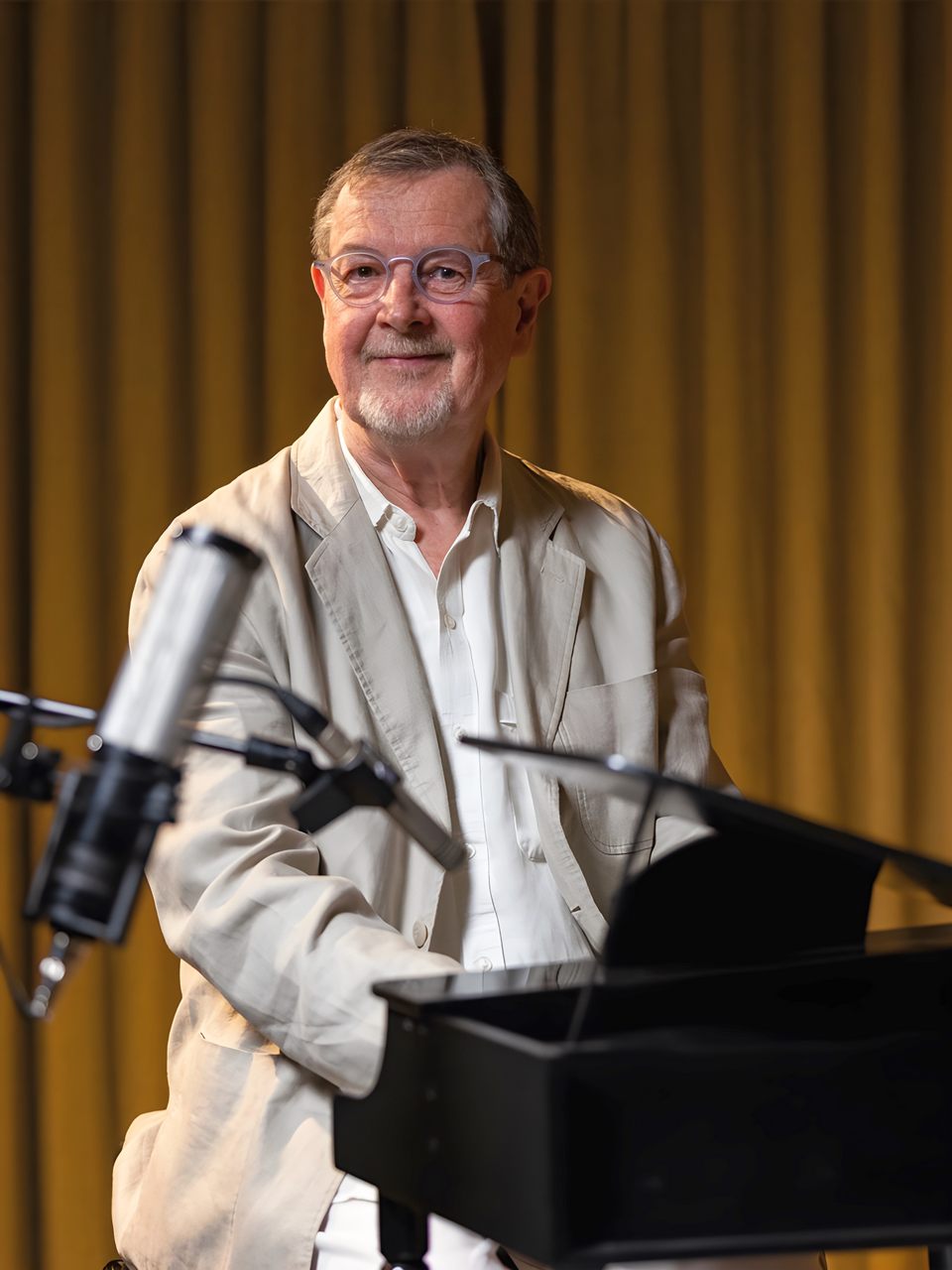
The English poet John Masefield had that rare gift of being able to use a few carefully selected words to create a magical sense of evocation. In his short, expressive poem entitled Beauty, the phrase “slow old tunes of Spain” evokes images of timelessness, profound stillness, shaded inner Spanish courtyards, heavy old dark-wooden Spanish furniture and perhaps even a faint aroma of amontillado sherry. But most of all, it seems to evoke the melancholy sound of the Spanish guitar. Even as a teenager, I was attracted to the infectious sounds of the classical guitar.
One of my much-cherished recordings was of the guitarist Andrés Segovia performing a work entitled Platero and I, a suite of charming pieces composed by Mario Castelnuovo-Tedesco. The music was inspired by a prose-poem written in 1914 by the Spanish poet Juan Ramón Jiménez in which Platero is described as “a small donkey; a soft, hairy donkey” who is a symbol of tenderness, purity and naiveté. I bought the record on impulse simply because I was attracted to the donkey sketch on the cover, but I came to adore the music. I once lent the recording to a friend but never got it back.
A recent survey revealed that there are about fifty million guitar players in the world, twenty million of whom live in the United States. I wondered how this information was acquired, assuming it wasn’t just a wild guess. The survey was conducted on behalf of Fender, the well-known guitar makers, so I suppose it must contain more than grain of truth. However, I would suggest that many millions of these people are not really guitar players, but merely individuals who bought a guitar under the erroneous impression that it would be easy to play. And as someone who once bought a guitar (a good many years ago, I should add) I can tell you with some authority that the guitar is not easy to play. Well, perhaps it is, if you are content with playing three or four chords. But that’s a bit like saying that someone who knows four or five French words is a French speaker.
Although the guitar had been used in jazz and popular music since the early twentieth century, it was thrown into the spotlight with the advent of rock and roll in the 1950s. In the process, the instrument was largely relegated, with a few notable exceptions, to merely strumming chords. It was an ironic outcome for an instrument with such an illustrious history. The guitar has been around for a long time, so long in fact, that its origins are lost in ancient history.

Plucked stringed instruments have probably been in existence ever since people realised that a tightened string could produce a musical sound. The Chinese pipa for example, has been in use for more than 2,000 years and remains the most popular Chinese plucked instrument. However, the earliest instruments that vaguely resembled a guitar were brought to the Iberian Peninsula from the Middle East sometime during the 8th century. The word “guitar” has its etymological origins in Andalusian Arabic, Latin and ancient Greek. Even by the early thirteenth century, several types of proto-guitars existed in Spain, the two most common being the guitarra latina (Latin guitar) and the so-called guitarra morisca or Moorish guitar.

In the years of the Renaissance, the guitar was probably used to provide strummed accompaniment for a singer or small instrumental groups much as it is today in folk music. The lute was the preferred instrument for art music and was used from the Medieval to the late Baroque eras. It was one of the most important instruments of the Baroque and, with the cello, used for providing basso continuo accompaniments.
During the seventeenth and eighteenth centuries, the Stradivari family created some of the finest violins ever made – almost a thousand of them. It’s often forgotten that the family also built cellos, violas, harps and a small number of guitars. Today only one Stradivari guitar, built in 1659 and known as the “Sabionari” has survived in a playable condition. Ilike many other guitars of the period, it’s an instrument with ten double strings.
Judging by the small repertoire, few nineteenth century composers took much interest in the guitar and it was not until the twentieth century that composers began to treat it as a serious concert instrument. Even so, there are comparatively few concertos for guitar and orchestra. The Spanish composer Joaquín Rodrigo wrote five concertante works for guitar and orchestra, including Concierto de Aranjuez (1939) and Fantasía para un gentilhombre (1954), composed at the request of guitarist Andrés Segovia who was apparently the gentilhombre mentioned in the title. The Concierto de Aranjuez is the best-known and its slow movement has become one of the most recognizable pieces in twentieth-century classical music.
Heitor Villa-Lobos (1887-1959): Concerto for Guitar & Orchestra. Pablo Sáinz-Villegas (gtr); Chamber Orchestra of Philadelphia cond. James Judd (Duration: 20:48; Video: 480p)
The prolific, cigar-smoking Heitor Villa-Lobos was Brazil’s premier composer with almost two thousand works to his name. He’s probably best-known for his nine orchestral works that come under the general title of Bachianas Brasileiras. He wrote many works for guitar and this one, a four-movement concerto, was written in 1951 specially for Andrés Segovia. It’s mostly attractive music with neo-classical overtones and at times has echoes of Brazilian popular songs anf folk music.

The spiky, rhythmic first movement sometimes morphs into a dreamy, lugubrious sections which – like so much of the composer’s music – seem to speak of the shady glades of Brazilian forests. The second movement (at 06:45) is delightful with vibrant changes of harmonic colour. It leads into an extended and technically demanding cadenza which is so long that it functions as the third movement. The last movement (15:41) has its moments, but really seems as though the composer is running short of ideas. Nevertheless, Spanish guitarist Pablo Sáinz-Villegas gives a spirited and technically-assured performance with a compelling sense of rhythm.
Richard Harvey (b.1953): Concerto Antico for Guitar and Orchestra. Ekachai Jearakul (gtr); Svetlanov Symphony Orchestra, cond. Mikhail Tatarnikov (Duration: 29:30; Video: 720p)
The English composer and multi-instrumentalist Richard Harvey is best-known for his music for film and television. His first work was to provide music for the television series Tales of the Unexpected in 1979. He has subsequently supplied scores to over eighty television and film projects. Among many other notable films, he composed the orchestral score for the Thai historical epic The Legend of Suriyothai and later wrote the music for the follow-up movie King Naresuan.

Richard Harvey wrote this guitar concerto in 1995 for the distinguished Australian guitarist John Williams who later recorded the work with the London Symphony Orchestra. The work became so popular that in 2012, British UK radio listeners voted it into the Classic FM Hall of Fame. The concerto is a technically demanding piece for the guitar and as the title implies, it’s based on old dance and song forms from different parts of Europe. There are five movements: Alborada; Contredanse; Cantilena; Forlana and Lavolta.
Thai guitarist Ekachai Jearakul (known to his many friends and followers as “Bird”) studied at the College of Music, Mahidol University and later completed his Bachelor Degree in Classical Guitar Performance with first class honours in 2010. The same year, he received a scholarship to complete a Master Degree in Classical Guitar Performance at the University Mozarteum in Salzburg. Since then, he has taken part in many competitions around the world representing Thailand. He has given solo performances in Japan, China, South Korea, USA, France, Italy, United Kingdom, Russia and Greece.
Richard Harvey’s Concerto Antico for Guitar and Orchestra is a splendid work. Beginning with just two flutes and little else, the texture gradually intensifies and develops into a sprightly tune in A major played on the guitar over rhythmic, chugging strings. It’s joyful, celebratory music which transforms into a pastoral mood to close with some lovely lyrical guitar playing from the soloist. The third movement, mostly in D major contains some beautiful delicate string writing, rich, sensuous harmonies and lovely timeless melodies that are heard as cello and oboe solos. There’s sometimes an attractive “filmic” quality to the music, perhaps influenced by the composer’s many hours writing music for the film studio. The fourth movement opens with solo guitar and jaunty infectious cross-rhythms, which remind me slightly of Respighi’s Ancient Airs and Dances. This brilliant finale opens with a driving pounding rhythm which leads into a highly virtuosic section for the guitar brilliantly played by Ekachai.

























